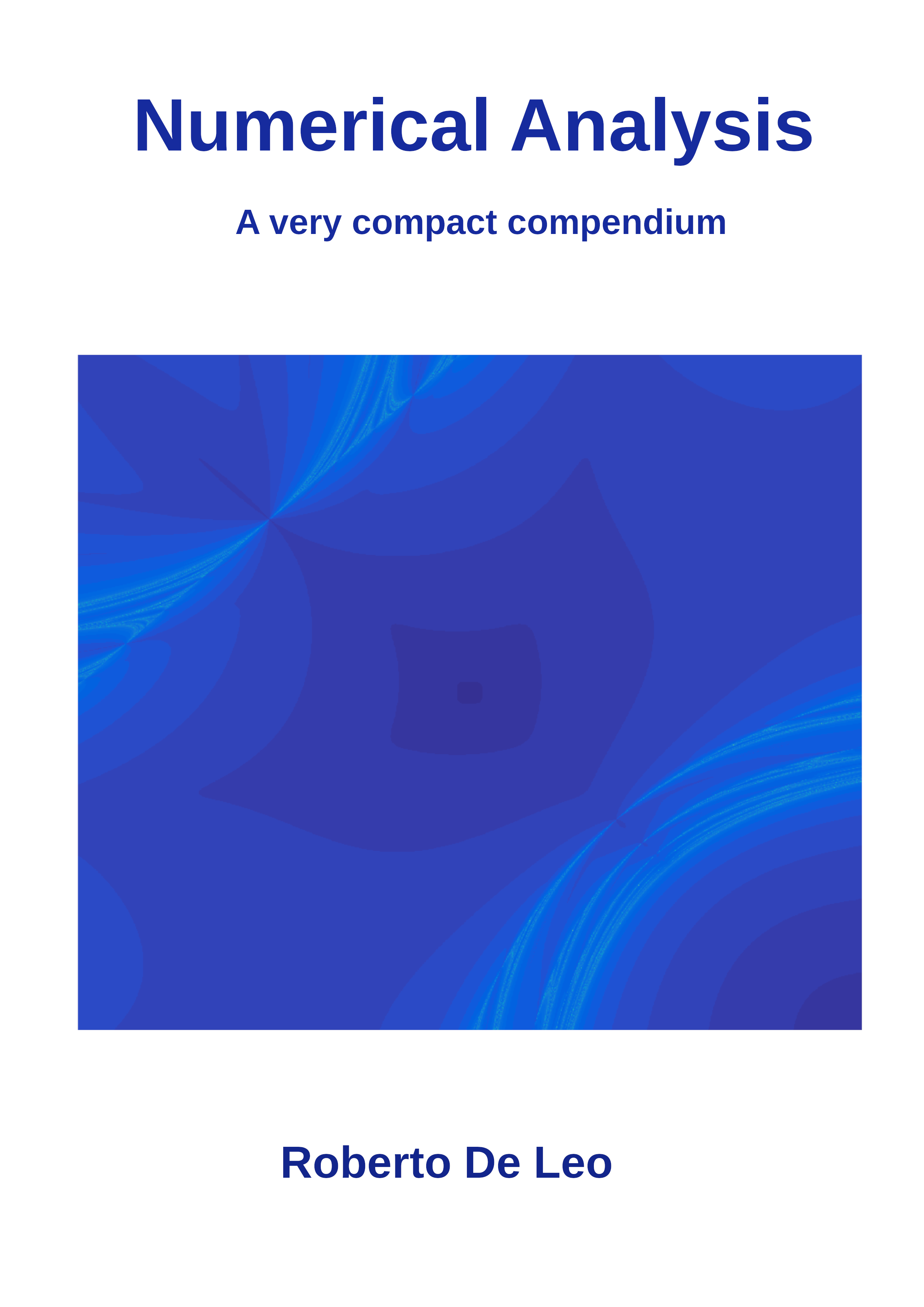Section 5.3 The LU and QR methods
We start with applying the LU decomposition to the evaluation of eigenvalues. The main idea of this application is the following result:Theorem 5.3.1.
If \(A,B\) are \(n\times n\) matrices and \(A\) is invertible, the spectra of \(AB\) and \(BA\) coincide:
\begin{equation*}
\sigma(AB)=\sigma(BA).
\end{equation*}
Proof.
\begin{equation*}
AB = A\cdot BA\cdot A^{-1}.
\end{equation*}
\begin{equation*}
\begin{pmatrix}1&2\cr 3&4\cr\end{pmatrix}.
\end{equation*}
Then
\begin{equation*}
v_1 = (1,3),\;\;v_2 = (2,4)
\end{equation*}
\begin{equation*}
e_1 = \frac{v_1}{\|v_1\|} = \frac{(1,3)}{\|(1,3)\|} \simeq (0.316 , 0.949 )
\end{equation*}
and
\begin{equation*}
e_2 = \frac{v_2-\langle v_2,e_1\rangle e_1}{\|v_2-\langle v_2,e_1\rangle e_1\|} \simeq \frac{(2,4) - 4.43(0.316 , 0.949)}{\|(2,4) - 4.43(0.316 , 0.949)\|} \simeq (0.948,-0.319).
\end{equation*}
Notice that
\begin{equation*}
\|e_1\|\simeq1.00,
\;
\langle e_1,e_2\rangle\simeq0.00,
\;
\|e_1\|\simeq1.00.
\end{equation*}
Hence
\begin{equation*}
Q = \begin{pmatrix}0.316&\phantom{-}0.948\cr 0.949&-0.319\cr\end{pmatrix}.
\end{equation*}
Now we can find \(R=Q^*A\text{.}\) Let us do the math to Octave: To keep our implementation of the QR algorithm light, rather than writing our QR decomposition general code we will use MATLAB's one: We are now ready to go over the QR method to evaluate eigenvalues. Given a matrix \(A\text{,}\) we find its QR decomposition
\begin{equation*}
A=Q_0R_0\text{.}
\end{equation*}
We set
\begin{equation*}
A_0=R_0Q_0
\end{equation*}
and we find its QR decomposition
\begin{equation*}
A_0=Q_1R_1.
\end{equation*}
Then we set
\begin{equation*}
A_1=R_1Q_1
\end{equation*}
and we find its QR decomposition and we keep repeating this algortihm. Notice that all matrices of this sequence have the same set of eigenvalues. For instance,
\begin{equation*}
A_0=R_0Q_0=Q^*_0Q_0R_0Q_0=Q^*_0AQ_0,
\end{equation*}
namely \(A_0\) is similar to \(A\text{.}\) Moreover, the \(A_k\) converge to an upper triangular matrix, whose diagonal terms then are necessarily the eigenvalues of \(A\text{.}\) The QR algorithm is implemented in the code below. In the last line we call MATLAB's own method to evaluate eigenvalues to double check that our implementation works fine. 